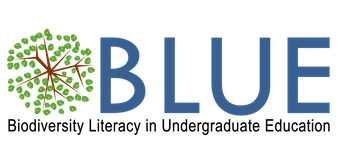Building Biodiversity Datasets
Author(s): Sara Hansen1, Anna Monfils1, Debra Linton1
Central Michigan University
924 total view(s), 172 download(s)
BuildingBiodiversityDatasets_Hansen.docx(DOCX | 7 MB)
BuildingBiodiversityDatasetsKey_Hansen.docx (Instructors only)(DOCX | 7 MB)
DatasetExamples_Hansen.xlsx (Instructors only)(XLSX | 12 KB)
- License terms
Description
Data are fundamental in the study and preservation of biodiversity, as they allow us to inventory biological organisms or systems, track changes over time, and combine efforts from multiple researchers toward a common goal. By recording what we observe, we are making sure others can use the same information to verify or refute our conclusions. Without a solid plan for collecting, organizing, and storing our data, we risk losing the context or losing the data altogether.
Using a case study from research on the impact of European frog-bit in the Great Lakes, students translate field sampling protocols to tidy datasets and learn about data structure.
Upon completion of this module, students will be able to:
- Explain the role of data in science
- Apply vocabulary and concepts related to datasets
- Translate field sampling protocols to data collection methods
- Build a dataset template using appropriate structure for project
- Identify tidy data and create tidy data templates
Cite this work
Researchers should cite this work as follows:
- Hansen, S. E., Monfils, A., Linton, D. (2022). Building Biodiversity Datasets. Biodiversity Literacy in Undergraduate Education, QUBES Educational Resources. doi:10.25334/D6BG-GT45
